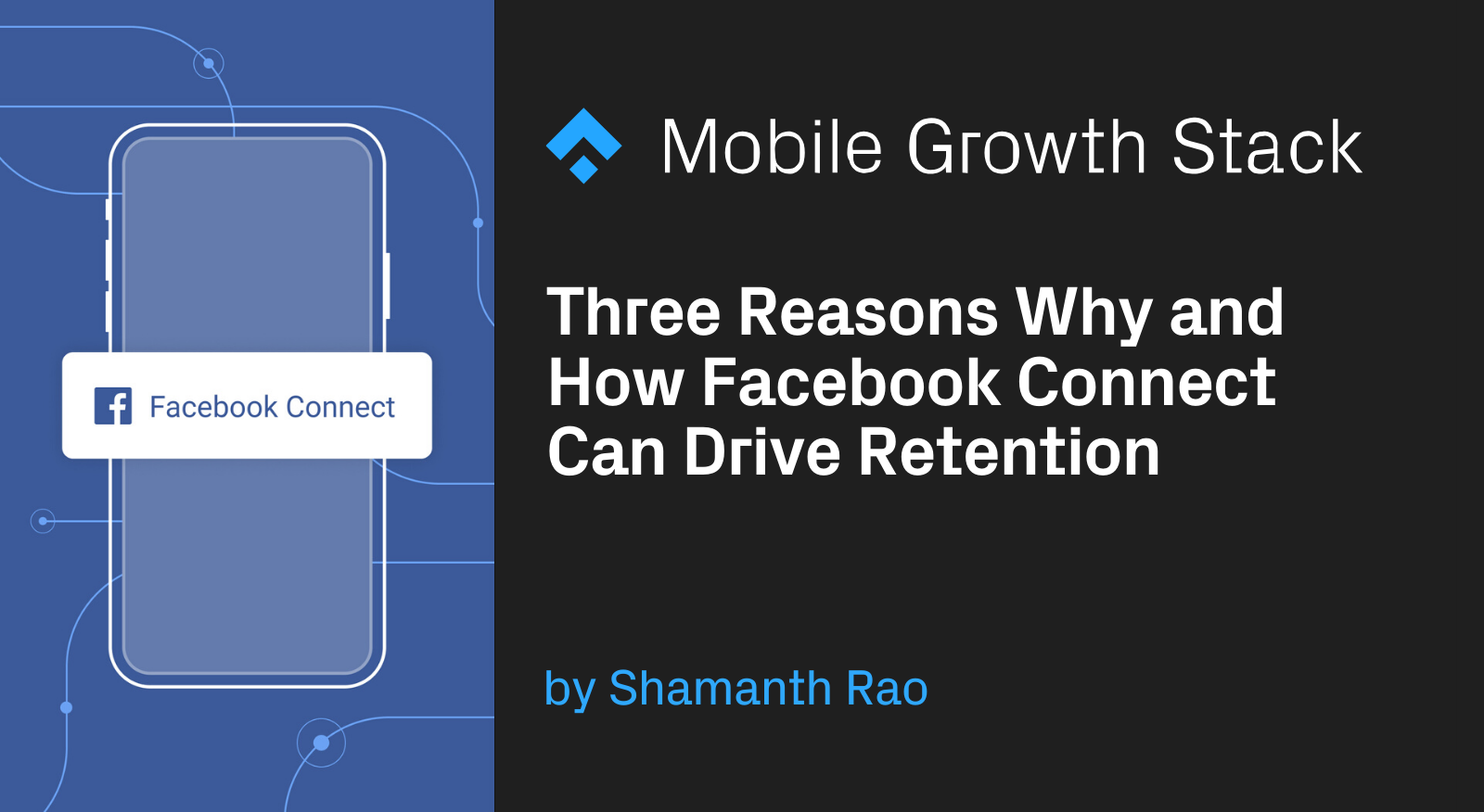 Editor’s note: This is a guest post from Shamanth Rao. Shamanth Rao is the founder and CEO of the boutique user acquisition firm RocketShip HQ and host of the Mobile User Acquisition Show podcast.
Editor’s note: This is a guest post from Shamanth Rao. Shamanth Rao is the founder and CEO of the boutique user acquisition firm RocketShip HQ and host of the Mobile User Acquisition Show podcast.
You’ve probably noticed by now: many apps (and websites) prompt you to sign in via Facebook. While it may often seem like a simple ask to make of a user, signing in via Facebook can have significant ramifications for an app’s retention metrics.
I saw this firsthand while working on a casual game: when we noticed the differential in retention rates between folks who sign in via Facebook and those who don’t, it was enormous. For this particular game in question, users signing in via Facebook had a 20-30% higher upstream and downstream retention rate than those who weren’t.
Given that Facebook authentication is a small decision that has a significant impact on growth, it’s helpful to understand why Facebook connect can be a small but critical lever – and, more importantly, how you can improve Facebook connect rates for your users.
Here are three reasons why Facebook connect can significantly drive retention:
1. You’re able to email users.
In spite of numerous “email marketing is dead” articles, emails remain a significant part of CRM strategy for any app. The ability to send out welcome emails, resurrection emails, offers, and events can all be extraordinarily powerful in bumping up retention across your user’s lifecycle.
It’s impossible to do so, however, if the user signs up as a “guest”. Having them connect via Facebook lets you access their email IDs, and target them during their lifecycle.
2. You can improve users’ social experience within the app.
Playing alone isn’t a lot of fun. That isn’t just my personal subjective opinion – we’ve seen time and again that users with a deeper social connection in an app (friends on a leaderboard, more games played with others, or chats initiated with others) have significantly better retention and monetization profiles than users don’t have these connections.
On one app I worked on, we mapped out how user retention changes according to the number of friends a user has within the app – and we found that downstream retention for users with over three friends was over three times that of users with no friends, and twice that of users with one friend.
Having users connect via Facebook opens up their social graph to you. You can surface their friends on your leaderboards. You can have them compete in head-to-head games. And you can show facepiles of their friends who have played specific games or themes.
All of this makes your app look much more fun and social – and directly impacts your metrics.

3. You can enable referrals – which can drive growth and retention.

What we’ve also seen is that users that come through referrals have consistently strong retention and monetization profiles. It makes sense: a user coming through a referral is responding to social proof from someone in their network who has found the app to be fun enough to invite them.
If you have users sign in as guests or via email, you can certainly have them invite friends from their email contact list or by manually typing their emails or entering their numbers into an SMS flow. However, it’s a significantly higher-friction process than enabling referrals via Facebook, in which you get to see their photos from their Facebook profiles, making the process far smoother overall.
Many apps we work with have k-factors of at least 30-40% – and even small improvements to the referral flows can cascade into significant new user growth.
**
Given how critical Facebook connect can be, how might you increase the percentage of users who connect via Facebook? There are three key low-hanging fruits:
- Messaging on the login screen (with benefits)

A common mistake that many apps make is that they prompt users to login via Facebook, but don’t take the time to explain the benefits. We’ve seen that articulating these benefits can significantly improve FB connect percentages: these benefits could be as simple as “XXX game is more fun with friends” or “Connecting via Facebook will let us find you opponents that are closer to your skill level”.
Surprisingly, many apps don’t take advantage of the real estate on the login screens to reiterate their value propositions, and nudge users toward the Facebook login rather than email sign-ups. This can be a missed opportunity (such as the above).
- Persistent prompt on the home screen
Many users can have initial skepticism around connecting via Facebook when they first sign up – and this is understandable, given that they don’t yet know much about the app itself.

However, as they experience the app’s value propositions, it can become more meaningful to prompt them to connect via Facebook – and they’re more likely to be receptive to these asks.
We’ve found it very impactful to surface these prompts on the home screen of the app to users signed in as guests – making them front and center. This can be incentivized, or accompanied by a reiteration of the app’s value proposition. No matter what, this method can help you capture users who haven’t been receptive to the FB login prompt on the login screen.
- Leaderboards or game progression maps

It’s when a user is exploring a potentially social experience that they’re most receptive to hearing about how using Facebook connect can turn an app into a more social experience for them – especially when they’re on a leaderboard, or a game progression map. It’s typically a good place to prompt users by implicitly stating: “Find out how your friends are doing.”
**
In summary, enabling Facebook connect – and improving your Facebook connect rate on an ongoing basis – can be a very powerful lever for impacting both upstream and downstream retention.
Improvements in the Facebook authentication rate can be done systematically by targeting key leverage points. Overall, it’s a huge contributor to growth, and results in double-digit improvements in upstream as well as downstream retention.


















